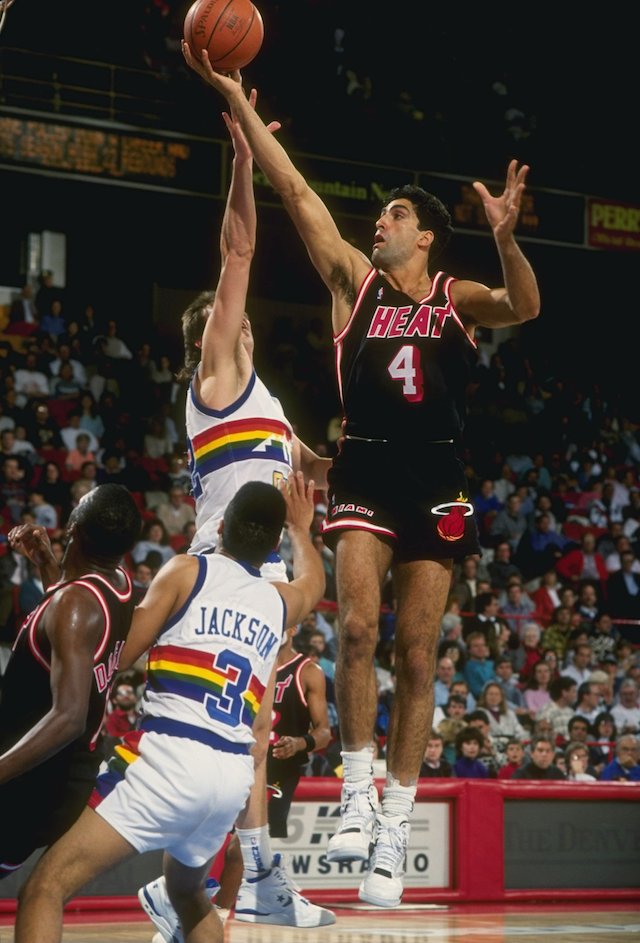It's Not About the Squat: Lessons from an NBA Strength Coach
/Miami Heat strength coach Bill Foran in action. Photo Credit: SLAM.
Getting good at lifting weights won’t automatically make you an elite athlete. No amount of strength, power, and agility developed in the weight room will make you as fast as Usain Bolt, as powerful as Serena Williams, or as dominant as LeBron James.
But what a good strength and conditioning program CAN do is augment your ability to excel at the technical and tactical aspects that make an athlete truly great at their sport.
Having a big bench doesn’t make you a better offensive lineman, but it will improve your ability to execute upper-body push movements that can translate to more effectiveness on the field. Strength and conditioning develops the “raw materials” that can then be applied to the field, pitch, track, pool, or court—but only if your athletes can make the connection between weight room work and sport performance.
Trust and communication between the coach and the athlete are absolutely critical for a successful S&C plan. And no one knows this better than professional strength coaches at the elite level—like Hall of Fame strength coach for the Miami Heat, Bill Foran.
Bill Foran: Building the Miami Heat's First Draft Pick
Currently in his 30th season as strength and conditioning coach for the Heat, Coach Foran began his career as an NBA strength coach in 1988, the same year the organization was founded. In this exclusive interview, Foran shares his experience building trust and improving communication with the Heat’s very first draft pick as an organization: Rony Seikaly.
Rony Seikaly, the first-ever draft pick by the Miami Heat in 1988.
“As a first-year expansion team in the NBA, the Miami Heat decided to go with a youth movement,” says Coach Foran. “In 1988, Rony Seikaly became the first-ever NBA draft pick for the Heat, who allowed Rony to start as a rookie for the entire 1988-89 season.”
But when Rony came into the weight room for the first time, it became clear that there was a perceived disconnect between the weight room and the court for the young rookie.
“When Rony came in for his first-ever workout with me, he said, ‘I am here to work out, but I don’t squat.’ I told him that we squat differently here. ‘How do you squat differently?’ Rony asked.
I said, ‘We squat correctly.’”
With Rony, Coach Foran faced a familiar challenge for coaches and strength coaches at all levels—how do you get your athletes to see the value in the strength training program you’ve designed? How do you get them to buy in?
Sometimes it can take a poor performance—or a subpar season—to help the athlete connect the dots, like it did for Rony.
American Airlines Stadium, where the Miami Heat play their home games.
“Rony really struggled as a rookie,” says Coach Foran. “At 230 lb, he was not physically prepared to battle veteran NBA centers. So the next summer, he stayed in Miami and went to work.”
Coach Foran designed a 4-day split routine for Rony, training the upper-body on Mondays and Thursdays and lower-body on Tuesdays and Fridays, with conditioning, plyometrics, and agility work sprinkled throughout as part of a periodized S&C program. Squats were a central ingredient in the program.
And Rony bought in.
“Rony trained for 16 straight weeks and DID NOT miss a workout. As a result of his consistency, Rony went from 230 to 252 lb, while staying at 8.0% body fat. He increased his vertical jump by 3 inches. And in the following season, Rony was voted the most improved player in the entire NBA.”
Coach Foran adds, incidentally, “He also became a very good squatter.”
The Takeaway
The point Coach Foran makes is this: it’s not about the squat.
@@It’s not about the movements you choose to perform in the weight room. It’s about how your athletes perceive those movements when it comes time to perform on the court, field, etc.@@
“Proper strength training improves your speed, power, and agility, while also making your body more durable,” says Foran. “And when you are strong and powerful, your true ability comes out.”
Building relationships with your athletes is as crucial to the success of an S&C program as progressive overload or periodization. Because if your athletes don’t buy in enough to trust you to improve their “true ability,” as Coach Foran puts it, they simply won’t do the work.
Coaches, help your athletes understand that it’s not about the squat, or the clean, or the bench press—it’s about how those weight room tools will improve how your athletes move in competition, and what that increased physicality can do for their athletic career.
Special thanks to Bill Foran and the National Basketball Strength & Conditioning Association (NBSCA) for this article. For more workout tips and stories from NBA strength and conditioning coaches, you can follow the NBSCA on Instagram, Twitter, or Facebook.
Join hundreds of thousands of coaches and athletes using Volt's intelligent training system. For more information, click here.
Learn more about Christye and read her other posts | @CoachChristye











